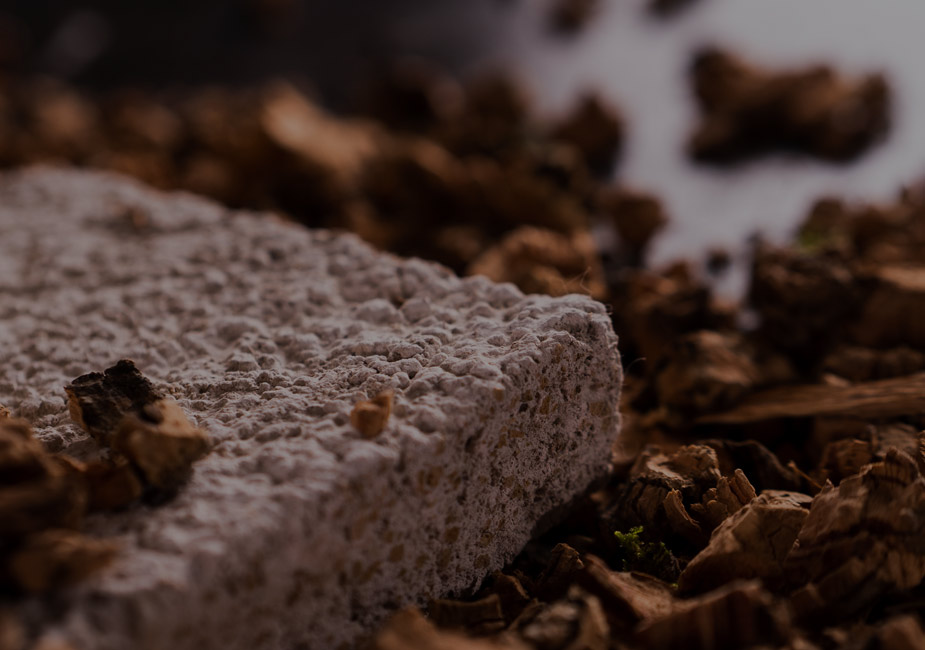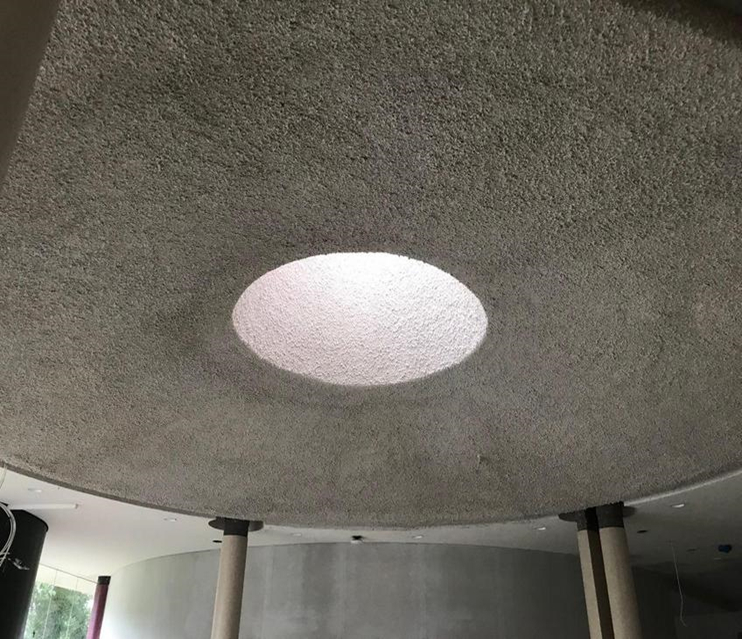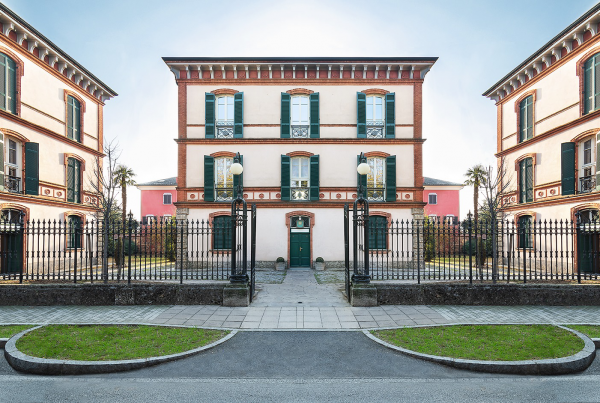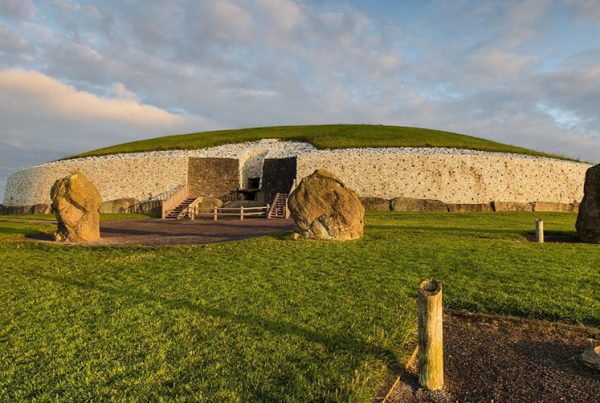The architectural restoration of the archaeological site Brú na Bóinne (the home of the Boyne, in Irish) is one of Diasen’s most important achievements. The project is unique both for its cultural significance (built around 3200 B.C. by a pre-Celtic population and forgotten for millennia until the 17th century, it became the subject of a lengthy restoration process between 1962 and 1975 and was declared a UNESCO World Heritage Site in 1993) and for the structural challenges it presents. First of all geometric surfaces, the lines that characterise the site are purely curvilinear. Diasen’s ecological solutions proved to be perfect for solving the problems related to the strong presence of humidity in the interiors and improving the quality of acoustic comfort.
Architectural restoration
Brú Na Bóinne Museum
Preserving cultural roots:
Diasen's contribution to architectural restoration
Time of realisation: 5 weeks
Location: Boyne Valley, Ireland
Absorption
Average between frequencies 250HZ, 500HZ, 1000HZ, and 2000HZ describing the sound absorption performance of a material.
Density
ρ = 400 kg/m3
Macroporous structure with high air content ensures excellent performance in terms of insulation and absorption of excess moisture.
Fire reaction
CLASS A1
Class A1 according to UNI EN ISO 13501-1. Zero flame generation and smoke emission.
Download
Download the technical details and discover all the special features of the Diasen solutions that made this unique architectural restoration and acoustic improvement project possible.
Technical insights
During 2019 the process of architectural restoration of the site that has now become a museum was initiated. But that is not all: acoustic and aesthetic improvements were carried out, and the work concentrated mainly on the part that includes the entrance, the museum centre and the refreshment area.
In these areas of the structure, Diathonite Acoustix cork-based sound-absorbing mortar was chosen for its acoustic properties and porous appearance. In some cases the cycle was completed, in black and white, with Limepaint lime-based paint.
Used products
The following focuses on the individual solutions used in the architectural restoration and acoustic improvement of the interior spaces of the Irish archaeological site.

Diathonite Acoustix
Ecological plaster based on cork and clay, sound-absorbing and breathable

WATStop
Tricomponent water barrier that can be applied both indoors and outdoors, solving moisture-related problems

Limepaint
Lime-based paint for interior use. Excellent covering capacity with high breathability

Polites 140
Glass fibre mesh (grammage = 120 g/m²) for both interior and exterior application
Diathonite Acustix application method
Find out how Diathonite Acoustix was applied to the curved surfaces and ceiling of the Brú Na Bóinne Museum.
Acoustic improvement in architectural restoration
Architectural restoration and retrofitting of historic buildings constitute one of the most difficult design challenges. The design approach in planning an architectural restoration intervention, inevitably brings with it the constraints of less freedom of intervention and the usual difficulty of aggregating prehistoric architectural traces with contemporary acoustic comfort needs in a coherent and accomplished plot.
This becomes even more complex in the case of buildings qualified as cultural heritage and therefore subject to stringent intervention restrictions, which further limit the possible modes of action. In fact, architectural restoration works not only constitute a collective opportunity to enhance the cultural heritage, but also and above all represent unique opportunities to achieve objectives of considerable prestige.
On this horizon, environmental issues have become increasingly central, and the decision to rehabilitate a pre-existing archaeological site, which can be experienced in the contemporary era, is not only reduced to considerations of architectural, urban planning and in some cases landscape aspects but, in a broader ethical approach, can also take on considerable ecological value and constitute a concrete example of circular economy. Diasen’s ecological and sustainable solutions, used to rehabilitate the structure, were able to combine all these needs into a single winning solution.
The correlation between environmental issues and building reuse is a not insignificant aspect and highlights the technical availability of green and environmentally sustainable applications, such as Diasen solutions, even for the project component concerning the acoustic treatment of historic buildings.








